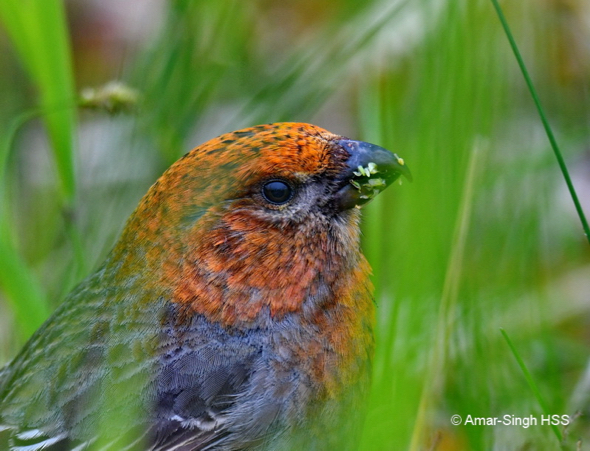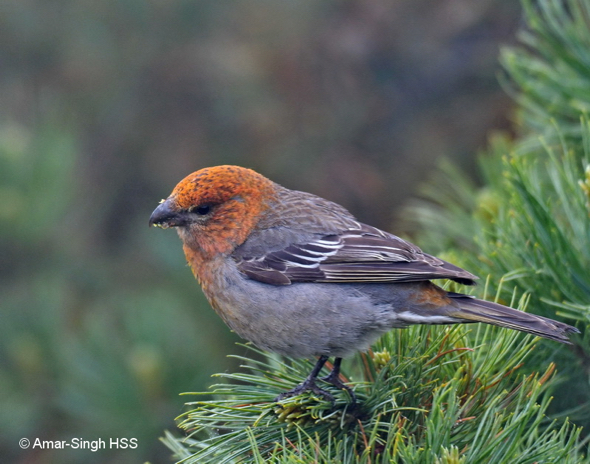
“We travelled to north-east Hokkaidō for a day trip to see some ‘alpine’ birds at Shiretoko Pass. Don’t let the altitude deceive you. Lowland east Hokkaidō is quite cold in summer due to the biting north wind (Cape Nosappu that I posted yesterday was freezing LINK. At the pass it was cold with thick mist that made viewing difficult. Fortunately, this pair of Pine Grosbeaks Pinicola enucleator sakhalinensis came extremely close, within arms-reach. It was exciting to watch them for an extended period and many non-bird watchers joined us and obtained images of these very large finches with their hand phone.

“The birds were generally feeding on flowers to get at the nectar. You can also see the grass seed they ate staining their beaks in the close-up images (below).
“In autumn and winter they also feed on berries and fruit. Note that the male is immature (above) and the female (below) also looks like a first-year bird. Note the nice spot of colour on the rump.
“Because of the extended close proximity I attempted a short hand held video using a brick wall for support, below.
“From Wikipedia regarding the scientific name, ‘The genus Pinicola is from pinus, pine tree, and colere, to dwell, and the specific enucleator is from enucleare, to remove the kernel (nucleus).”
Dato’ Dr Amar-Singh HSS
Ipoh, Perak, Malaysia
6-7th June 2019
Location: 738 meters ASL, Shiretoko Pass, North-East Hokkaidō, Japan
Postscript: Message from Takeyoshi MATSUO – Superb bird guide and experienced bird waters in Hokkaido.
“What a nice photos! They are in their first summer plumage, male retained juvenile feathers on the all primaries, secondaries and tertials and tail feathers, only 6 greater coverts molted into new feathers, female retained juvenile feathers on the all primaries, secondaries and tail feathers, only 6 greater coverts and tertials molted into new feathers. These photos make me learn more in their molt strategy.”












